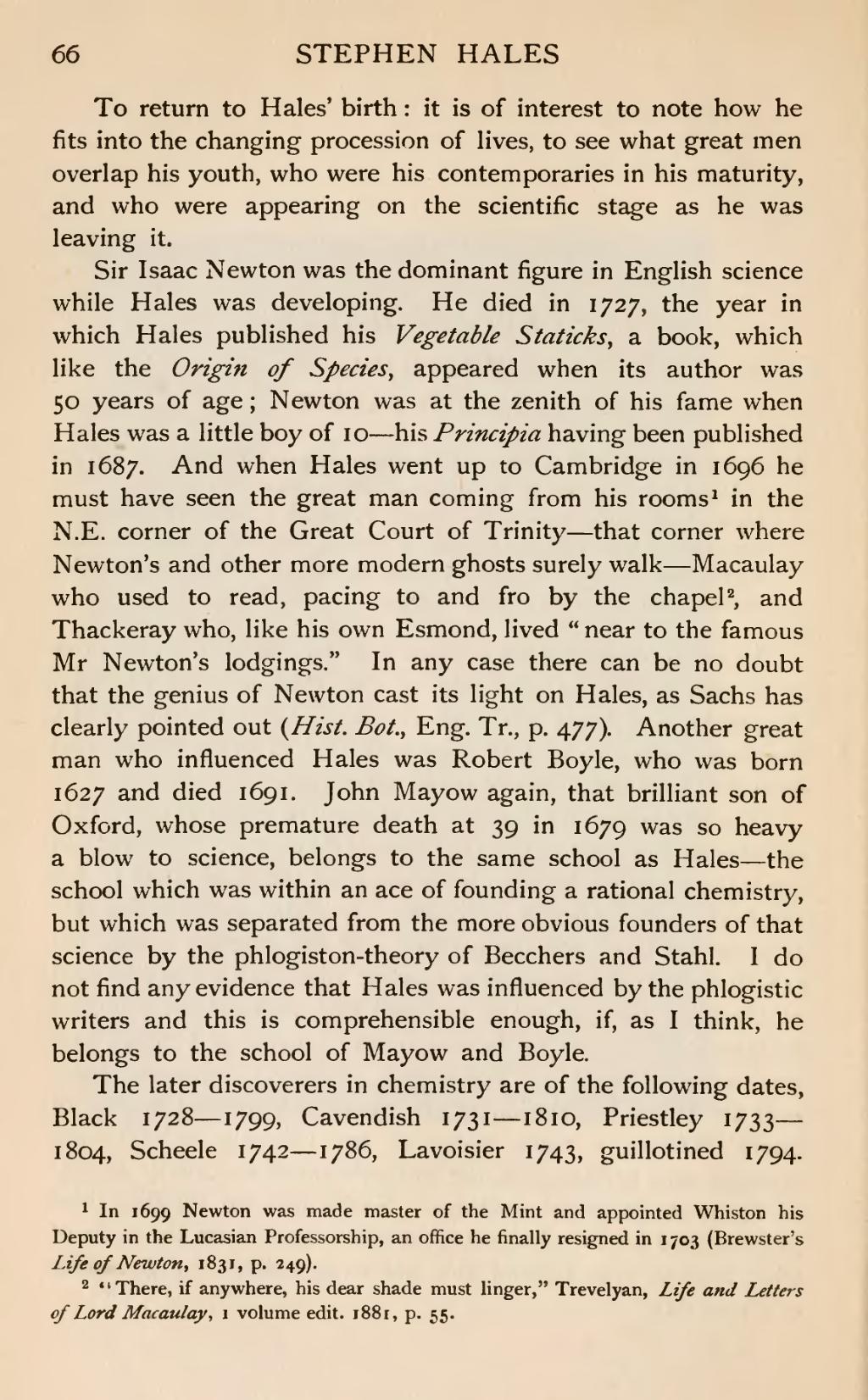To return to Hales' birth: it is of interest to note how he fits into the changing procession of lives, to see what great men overlap his youth, who were his contemporaries in his maturity, and who were appearing on the scientific stage as he was leaving it.
Sir Isaac Newton was the dominant figure in English science while Hales was developing. He died in 1727, the year in which Hales published his Vegetable Staticks, a book, which like the Origin of Species, appeared when its author was 50 years of age; Newton was at the zenith of his fame when Hales was a little boy of 10—his Principia having been published in 1687. And when Hales went up to Cambridge in 1696 he must have seen the great man coming from his rooms[1] in the N.E. corner of the Great Court of Trinity—that corner where Newton's and other more modern ghosts surely walk—Macaulay who used to read, pacing to and fro by the chapel[2], and Thackeray who, like his own Esmond, lived "near to the famous Mr Newton's lodgings." In any case there can be no doubt that the genius of Newton cast its light on Hales, as Sachs has clearly pointed out (Hist. Bot., Eng. Tr., p. 477). Another great man who influenced Hales was Robert Boyle, who was born 1627 and died 1691. John Mayow again, that brilliant son of Oxford, whose premature death at 39 in 1679 was so heavy a blow to science, belongs to the same school as Hales—the school which was within an ace of founding a rational chemistry, but which was separated from the more obvious founders of that science by the phlogiston-theory of Becchers and Stahl. I do not find any evidence that Hales was influenced by the phlogistic writers and this is comprehensible enough, if, as I think, he belongs to the school of Mayow and Boyle.
The later discoverers in chemistry are of the following dates, Black 1728—1799, Cavendish 1731—1810, Priestley 1733—1804, Scheele 1742—1786, Lavoisier 1743, guillotined 1794.
- ↑ In 1699 Newton was made master of the Mint and appointed Whiston his Deputy in the Lucasian Professorship, an office he finally resigned in 1703 (Brewster's Life of Newton, 1831, p. 249).
- ↑ "There, if anywhere, his dear shade must linger," Trevelyan, Life and Letters of Lord Macaulay, 1 volume edit. 1881, p. 55.
